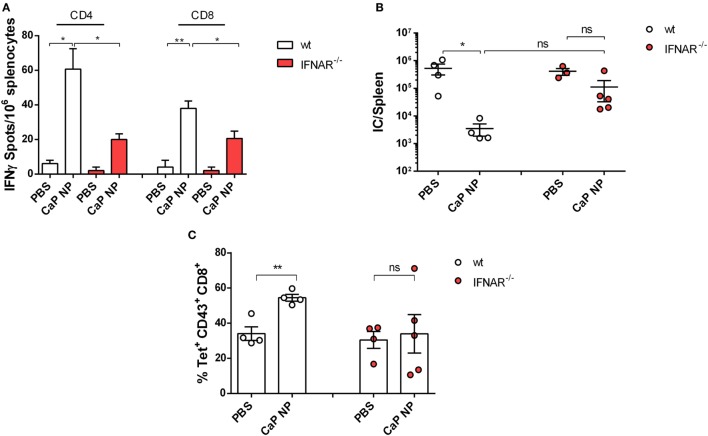Figure 3.
Vaccination induced type I interferon signaling is important for sufficient protection against acute FV infection. (A) C57BL/6 mice or IFNAR−/− mice were vaccinated subcutaneously either with phosphate-buffered saline (PBS) or CpG and FV peptide functionalized calcium phosphate (CaP) nanoparticles (NPs) in a prime-boost regiment. 14 days post the last vaccination, mice were sacrificed and splenocytes were restimulated ex vivo with 5 µg/mL of GagL85–93 or gp70123–141 peptide. After 24 h, the numbers of IFN-γ-producing CD4+ and CD8+ T cells were determined by using an ELISpot reader. The results of two independent experiments are depicted, n = 6. Statistical analysis was performed by ANOVA with Bonferroni’s multiple comparisons test (*p < 0.05; **p < 0.01). (B) Vaccinated C57BL6 mice or IFNAR−/− mice were challenged with FV 14 days post the last vaccination. 7 days later, mice were sacrificed and infectious centers (ICs) in the spleen were determined. Statistical analysis was performed by Student’s t-test (*p < 0.05; **p < 0.01). (C) Frequencies of tetramer+ FV-specific CD43+ CD8+ T cells in C57BL6 mice or IFNAR−/− mice 7 days after FV infection. Statistical analysis was performed by Student’s t-test (*p < 0.05; **p < 0.01). All data represent mean ± SEM.

